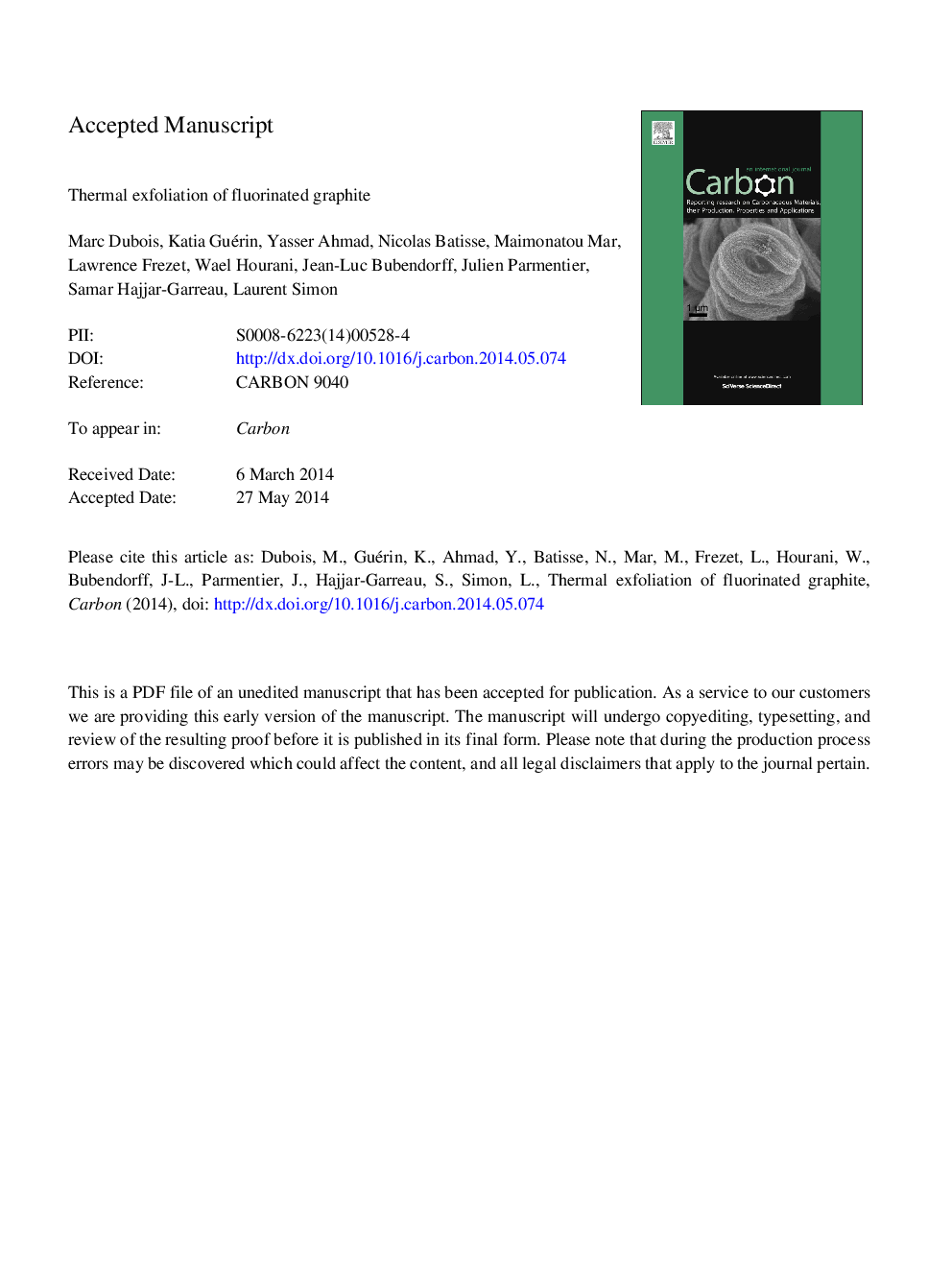| Article ID | Journal | Published Year | Pages | File Type |
|---|---|---|---|---|
| 7853693 | Carbon | 2014 | 39 Pages |
Abstract
The thermal exfoliation of graphite fluoride was investigated using two starting materials: fluorinated HOPG and powdered room temperature graphite fluoride (RTGF) post-treated in pure F2 gas in order to adjust the relative contents of intercalated species, the carbon hybridization and the C-F bonding. Firstly, the thermal exfoliation of HOPG sample (of composition CF0.57) at the nanoscale is highlighted using scanning tunneling microscopy (STM). Such process involves a defluorination, which is accelerated by disruption of the graphene sheets. Similar breaking occurs during the exfoliation of post-treated RTGF and evolves CF4 and C2F6 gases. Moreover, the exfoliation using a thermal shock is assisted by the fast deintercalation of the catalyst species in the region where the covalence of the C-F bonds is weakened. In such way, exfoliation occurs with the quasi-total defluorination.
Related Topics
Physical Sciences and Engineering
Energy
Energy (General)
Authors
Marc Dubois, Katia Guérin, Yasser Ahmad, Nicolas Batisse, Maimonatou Mar, Lawrence Frezet, Wael Hourani, Jean-Luc Bubendorff, Julien Parmentier, Samar Hajjar-Garreau, Laurent Simon,
